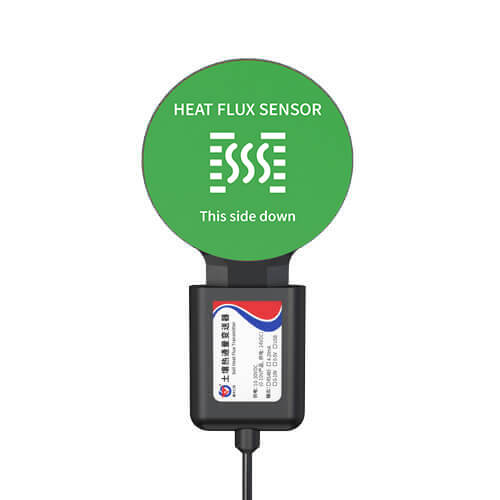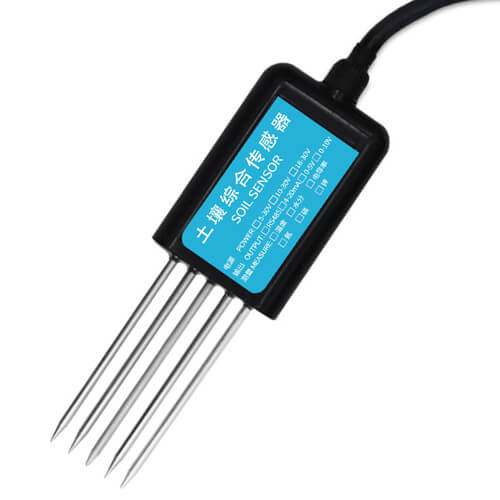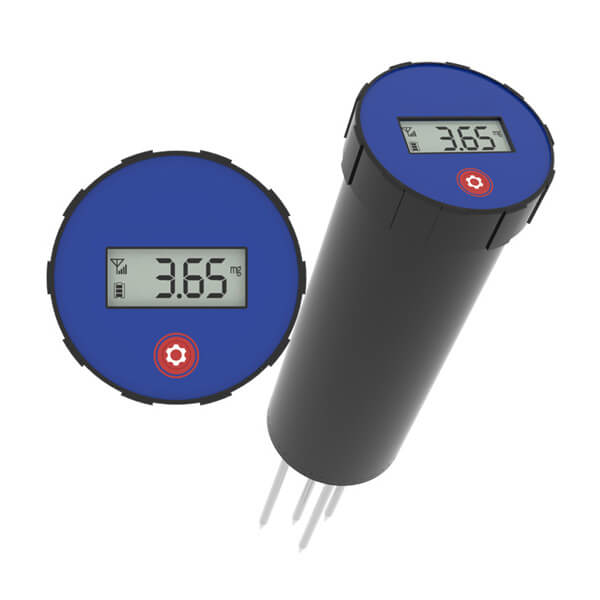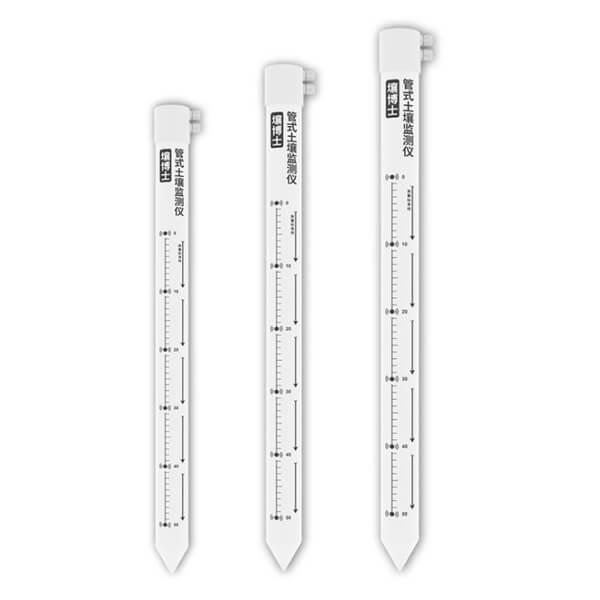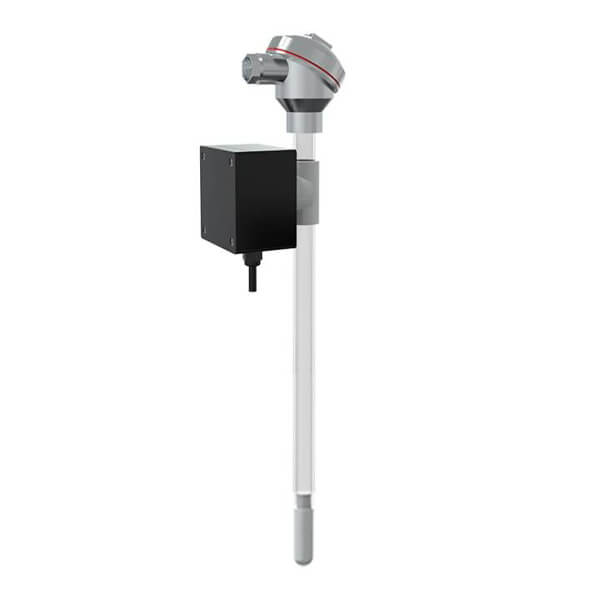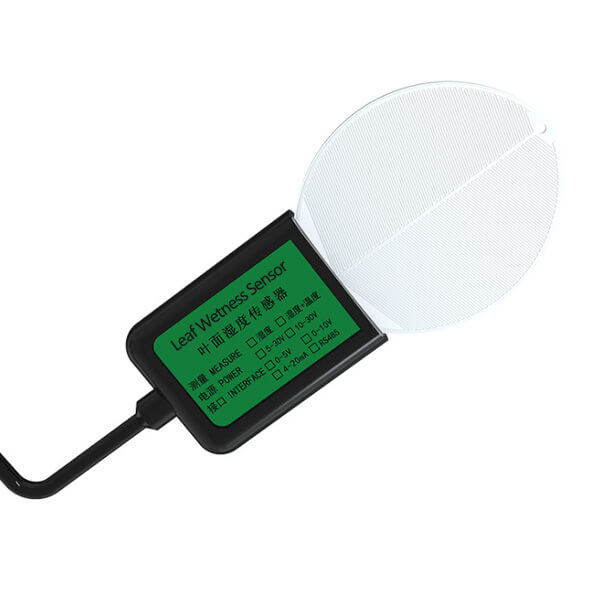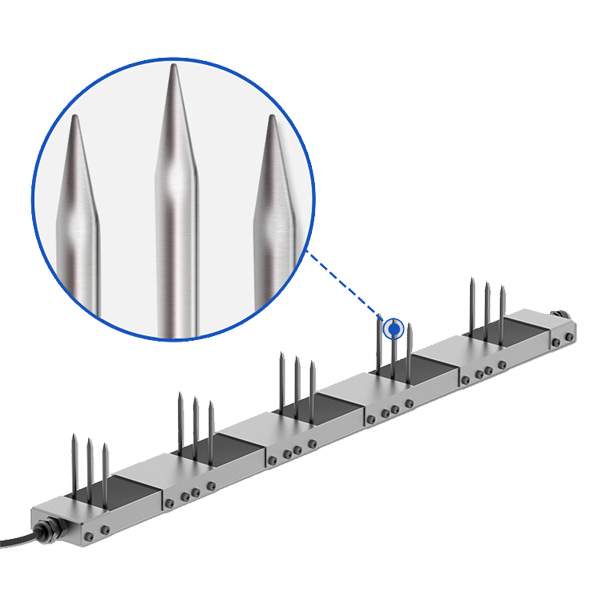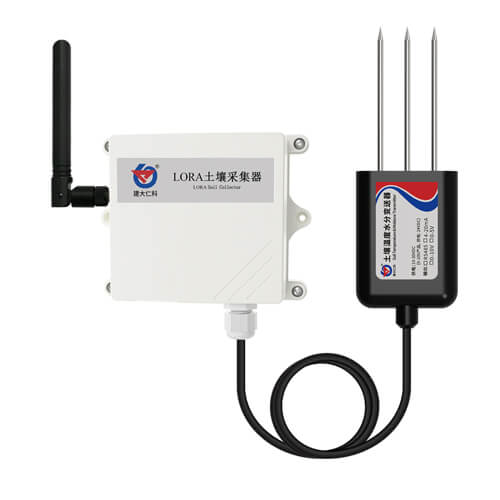Table of Contents What is Hydrology? Hydrology refers to the various phenomena of water changes and movement in nature. It
Soil Water Potential Sensor
This product measures soil water potential by detecting changes in pressure or tension within the sensitive element. It features advanced sensing technology for fast response and high accuracy. Constructed with ceramic materials, the soil water potential sensor effectively prevents signal drift caused by material degradation, eliminating the need for calibration or maintenance. With strong anti-interference capabilities, it ensures accurate measurements even in environments with fluctuations in temperature, humidity, or high salinity.
- Model: RS-SWP-N01-TR-1-EX
- MOQ: 1 PCS
- Delivery date: within 24 hours
- Price: $105
About Soil Water Potential Sensor
Soil water potential refers to the amount of work (or energy) required to transfer a unit quantity of pure water from a reference state—typically defined as pure water at atmospheric pressure, at a temperature of 25°C, and at the same elevation as the soil water—to a specific point within the soil under isothermal and isobaric conditions.

Features
- Accurate and Reliable: Calibration-free design enables rapid deployment and minimizes environmental interference.
- Rugged and Durable: Encapsulated housing ensures suitability for long-term field monitoring.
- Highly Stable: Our soil water potential sensor offers excellent anti-interference capabilities, making it ideal for complex and variable outdoor environments and continuous long-term operation. It maintains stable performance across varying temperature and humidity conditions.
- Easy Installation: With a compact and lightweight design, the sensor is easy to transport and install.
Our soil water potential sensor utilizes advanced sensing technology to establish an energy equilibrium between the built-in sensitive element and the soil moisture. When soil water potential changes, the sensitive element detects the corresponding variation in pressure or tension, thereby providing accurate soil water potential readings. It enables real-time monitoring of the energy status of water in the soil, offering valuable insights into soil moisture conditions. This supports scientific irrigation, agricultural production, and ecological research by delivering reliable data. Designed with a potting process, this soil water potential sensor is robust and durable, making it ideal for long-term field monitoring and research.
Soil water potential sensor datasheets
| Power supply | 5-30V |
|---|---|
| Max. power consumption | 0.25W (DC12V) |
| Operating temperature | -40℃~+60℃ |
| Measure range | -5~-100kPa |
| Resolution | 0.1kPa |
| Accuracy | ±(10% current reading + 2kPa) |
| Protection level | IP68 |
| Wire length | 2m by default, other lengths can be customized |
| Output signal | RS485 (ModBus protocol) |
How to Install Soil Water Potential Sensor?
1. Preparation before installation
- Inspect the sensor: check the soil water potential sensor and its accessories to ensure all components are complete and undamaged.
- Prepare tools: gather necessary tools such as a soil auger, shovel, and water (for moistening the soil or preparing slurry).
- Determine installation location: choose an appropriate installation site based on user requirements, typically near the root zone where plants absorb water. Determine the installation depth based on soil type and measurement needs, generally 30 cm or deeper.
2. Sensor installation
- Digging: use a shovel or other tool to dig a hole of suitable depth at the chosen location.
- Placing the sensor: prepare a soil slurry using some of the excavated soil and water, or moisten the soil directly. Coat the sensor with the wet soil or slurry and insert it into the hole. For deeper installations, slowly lower the sensor into the hole and gradually pour in the prepared slurry to ensure full contact between the sensing surface and the surrounding soil.
3. Connection and testing
- Wiring: connect the sensor’s cable to the data acquisition device, ensuring a secure and stable connection.
- Testing: before backfilling, test the sensor using the data logger to confirm proper operation and accurate data transmission.
4. Backfilling and protection
- Backfill soil: once the sensor is confirmed to be working properly, backfill the hole with the remaining soil and compact it to restore the soil to its original state. This ensures close contact between the sensor and the surrounding soil for optimal measurement accuracy.
Soil Water Potential Sensor FAQs
1. What is soil water potential?
Soil water potential refers to the potential energy of water within the soil, defined as the amount of energy required to extract a unit of water from the soil under isothermal conditions. It is typically measured in kilopascals (kPa). When the soil is fully saturated with water, the water potential is zero. As the soil dries and the water content drops below saturation, the water potential becomes negative—the drier the soil, the more negative the value.
Soil water potential is a key parameter for assessing soil drought conditions and plays a crucial role in plant water stress research.
2. What is a soil water potential sensor?
A soil water potential sensor is a device used to measure the strength with which water is retained in the soil—that is, how easily or difficultly plants can absorb water. Unlike soil moisture sensors, which measure the quantity of water in the soil, soil water potential sensors measure the energy state of the water. This provides more meaningful insights into plant-available water and is especially useful for irrigation management, plant physiology studies, and drought monitoring.
3. How does a soil water potential sensor work?
A soil water potential sensor typically consists of a humidity sensor and a porous material with a known water release curve. When the porous material reaches moisture equilibrium with the surrounding soil, the humidity sensor measures the moisture content within the porous material. Using the known water release curve, the sensor then converts this moisture content into a corresponding soil water potential value.
This indirect method allows the sensor to accurately reflect the energy status of water in the soil, providing valuable data for evaluating plant water availability and optimizing irrigation practices.
4. What is the effect of soil water potential on soil?
Relationship between soil water potential and soil:
| Water potential range (kPa) | Soil state | Description |
|---|---|---|
| 0 ~ -10 | Saturated | The soil is too wet and the drainage may be poor |
| -10 ~ -30 | Field holding capacity | Best for plant growth |
| -30 ~ -100 | Gradually dry | Plants begin to be limited by water |
| Below -100 | Drought | Plants are seriously lacking water and may even wither |
5. How to wire the sensor?
Brown wire: Connect to power supply positive (10–30V DC)
Black wire: Connect to power supply negative
Yellow wire: Connect to RS485 A (Data A)
Blue wire: Connect to RS485 B (Data B)
6. What are the applications for a soil water potential sensor?
Soil water potential sensors are widely used in smart agriculture, water resource management, scientific research, greenhouse automation, orchard irrigation, and forest ecology. They help improve irrigation efficiency, optimize water usage, and increase crop yields by providing precise data on soil water availability.
7. What should be noted during installation?
- Ensure the sensor maintains firm contact with the surrounding soil
- Avoid interference from rocks, air gaps, or loose soil
- It is recommended to insert the sensor vertically at a representative location
- Keep the installation depth consistent across measurement points to ensure reliable data comparison
8. What's in the package list?
Soil water potential sensor*1
Certificate of conformity*1
Warranty card*1
Related Blogs
Table of Contents Gardening is a thought-provoking and enjoyable activity. Sometimes, it’s not easy to figure out exactly how much
Table of Contents What is soil water? Soil water is a general term for all forms of water in the
The commonly used communication method for data acquisition and control is RS485. RS485 is a general communication standard. It can
Table of Contents Many countries in the world are facing the problem of water shortage. Drinking water and irrigation water
Table of Contents A wise gardener knows how to grow up plants and flowers healthily in the garden. Because he
Soil moisture is the source of the survival of plants. Soil moisture refers to the moisture content of the soil.


